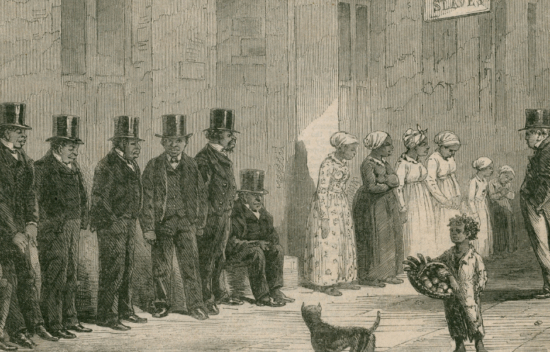
Domestic and International Views of the Civil War
Guiding Question
- What were the major turning points and events of the Civil War?
Objective
- Students will assess differing viewpoints of the Civil War by analyzing primary sources.
Student Resources:
- Domestic and International Views of the Civil War Primary Source Set
- Scott’s Great Snake, 1861
- “The Surrender of the Traitors,” 1862
- Address to President Abraham Lincoln by The Working-Men of Manchester, England, 1862
- “On the War and its Conduct,” Clement Laird Vallandigham, 1863
- Domestic and International Views of the Civil War Graphic Organizer
Engage
- Begin class by discussing the importance of public and international opinion during wartime. Ask students: “What impact would it have if a government did not have support of some of its citizens during a war? What about if the government faced international opposition in conducting the war?”
- Depending on student knowledge, you may briefly discuss contemporary examples of conflicts ranging from the Iraq War to the Russian invasion of Ukraine to explore the impact domestic and international opposition to a war can have.
- As you discuss, write students’ thoughts on the whiteboard to return to after the primary source activity.
Explore
- Distribute the Domestic and International Views of the Civil War Primary Source Set and the Domestic and International Views of the Civil War Graphic Organizer to each student.
- As students complete each reading, have them answer the analysis questions and fill out each row of the graphic organizer individually or with a partner.
Assess & Reflect
Class Discussion and Exit Ticket
- Reconvene the class once they have completed the readings and graphic organizer.
- Return to the original discussion about domestic and international opinion during wartime. Discuss questions such as:
- What did students learn through this lesson?
- Have their original thoughts changed?
- As an exit ticket, have students write a few paragraphs summarizing what they learned from their readings by answering the question: How did people both domestically and internationally view the Civil War?
AND/OR
Role Play Press Conference
- Select 5 students take on the roles of key figures from the sources:
- Winfield Scott
- A working-man from Manchester, England
- A member of President Lincoln’s cabinet
- French or British government member
- British textile mill owner
- Conduct a mock press conference where the rest of the class acts as journalists asking questions about their views on the war, then write a short article about the press conference in the style of a newspaper.
- Evaluate students who role played key figures based on historical accuracy, ability to stay in character, and effectiveness in answering questions using evidence from the sources.
- Evaluate students who acted as reporters on their interview questions, written response, and adherence to the style of writing.
Extend (Optional)
- Elections during the Civil War were a crucial way that public opinion could influence the conduct of the war. Have students research the elections of 1862 and/or 1864 and write a response on their importance for maintaining support for the war effort in the Union. Have students also consider the principle of popular sovereignty and how important it is that elections still occur even during a time of crisis like war.